Hello dancers, how good of you to be here!
Spring 2007
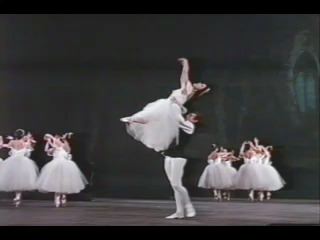
Goal:
Execute the partnering in Fokine's Les Sylphides with grace & precision
while making life easy for your ballet partner.
Method:
Identify & imitate the technique of a superlative role model.
Implementation:
We'll look at snapshots of dame Margot Fonteyn's 1963 performance with the Royal Ballet, partnering Rudolf Nureyev
during the Grand Waltz finale, approximately 25 minutes into the 29 minute dance.
The dance motif, briefly, is
balancé front, balancé back, lift;
repeat 3x total, alternating sides.
picture on right: Fonteyn facing ceiling rather than front.
Third Lift (same as First Lift) :
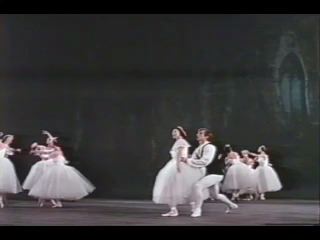
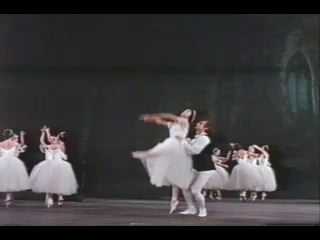
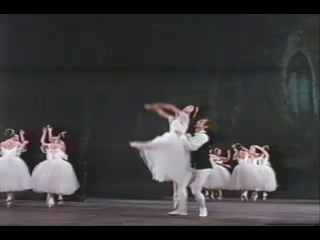

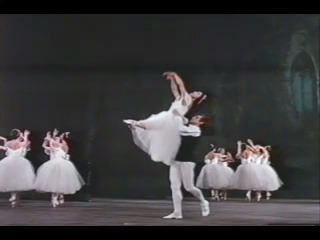


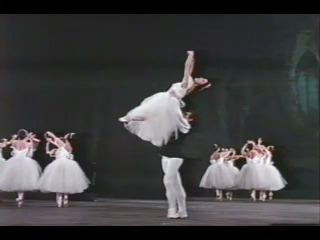
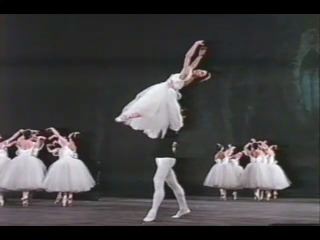
Preparatory balancé front anticipates position in 3rd (& 1st) lift:
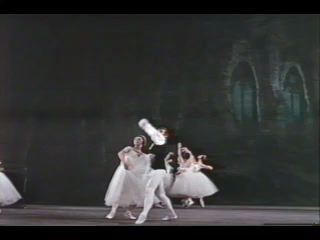
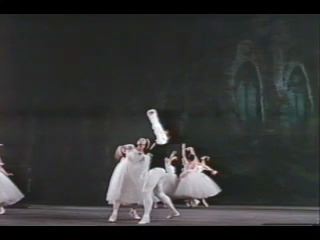
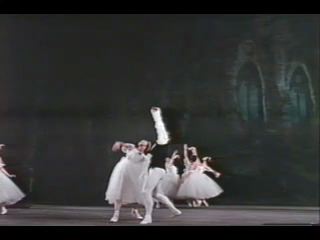
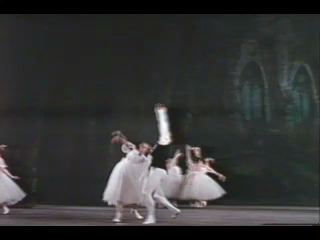
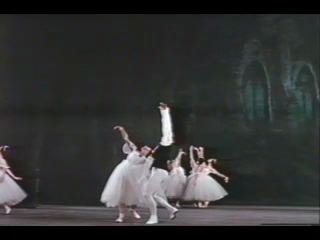
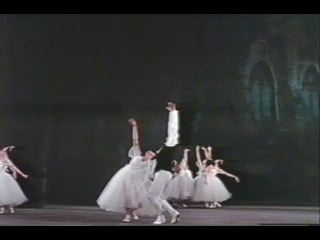
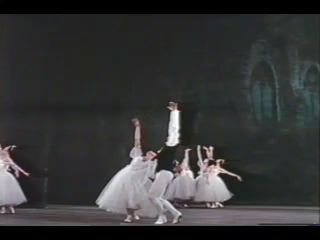
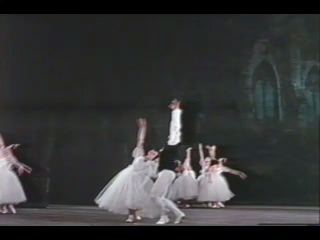
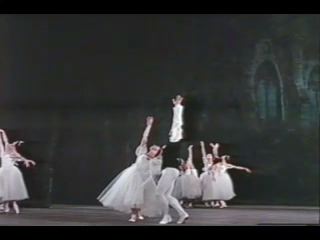
Note how Fonteyn's eyes are looking at the ceiling during the balancé to the front; the photos are fuzzy, but you can still make out that her face is parallel to the ceiling above her; such a position is only possible (without breaking your neck) if the tilt of the head backward takes the spine with it in such a way that the shoulders are no longer in a plumb line above the hips. The position that this is approaching is closer to that of reclining (on one's back or on one's side) than it is to the position of standing upright.
So what?
My point in calling your attention to these spacial positons of the body is not because I'm interested in the nuances of the personal choices that a dancer makes in expressing herself thru hand flapping or directions of gaze. Rather my interest is practical & selfish: I'm lazy and I don't want to work harder than I have to when lifting my partner. The reason that the horizontal placement of a body is easier to lift than the vertical placement of the body has to do with 2 factors: 1) people don't come with handles: the major axis being horizontal makes for a better grip; & 2) it positions the center of weight to be lifted more directly in a plumb line with the center of weight of the lifter. (The latter is an idea out of Newtonian mechanics that I don't have the wit to explain, so I'll leave it as an exercise for you readers to ponder. I would add, however, that the ramifications are profound: in order for your partner to take on the role of your weight-bearer, you need to open up the negative space that invites the partner to approach you in a supportive position, and that in turn implies that you've got to get your own supports -- your legs & feet -- out from underneath you, so that your partner can take their place. If you don't allow yourself to feel off balance, if you don't yield to (or actively pursue!) the sensation of falling (preferably toward your partner), you'll never be sending your partner the necessary signal to come support you; in which case, we might as well all be dancing alone, like we were back in the usual ballet class, instead of pursuing the mutually-dependent partnership of a pas de deux.)
That's All
That's all I wanted to say: have a look at the photos above & consider how you might use what you see to improve your partnering efforts while you dance these lifts.
The rest of this web page I just ramble on in no particular order on ideas that may or may not be of interest to anyone.
Thank you for your attention.
Try it Yourself
One of the images that comes up in various dance situations is that of the pelvis as a bowl of water (or a bowl of guts, if you prefer). Often the idea is that you do not want to spill the water out of the bowl; this constrains one's movement thru space. Try replacing this idea with the opposite notion: you DO want to spill all the water out of the bowl. Try alternating between spilling all your guts onto your partner while being lifted with keeping your guts inside, and see how your partner feels about each way. Compare with the images of pouring weight (sand, water) out of the top of your head (as in Alison's classes, or in Limón technique) to initiate locomotor movement from the top of the head and onto a different support (such as a hand).
While performing on stage, be conscious of looking directly into the overhead lights - it may be blinding, but there you go.
Check yourself when you're jumping & wanting a boost from your partner: if you find yourself moving in the up-down dimension to the exclusion of the inclined planes when you're jumping, (i.e. if you maintain the alignment of shoulders directly above hips) you may be making lifts harder for your partner than you need to: is modification possible within the bounds of the choreography? Is new choreography possible within the bounds of the composition task at hand? Conversely, can you find any lifts that are exceptions to this rule - i.e., lifts that are in the up-down dimension only & yet are effortless? Can tensile strength or pulling (instead of pushing) help?
Experiment with falling on your own. It's gentler on the body if you become familiar with falling when you initiate the direction of the fall yourself. When working with a partner, the direction of a fall can catch you by surprise if you haven't developed the kinesthetic sense of where your head is in space with respect to the floor, and you'll want to develop sufficient skills that you can catch yourself with the floor as your partner when your other partners aren't available to soften gravity's imposition. Try rolling & twisting & bending & pouring weight & leaning & spiraling & using more parts of the body that just the soles of the feet and hands for weight-bearing. The easiest lifts of all are when you can fall into the position that your partner needs to lift you - find these lifts, they are the gems.
Her tiara points to the Great Sylph Overseer in the sky. Oy Vey.
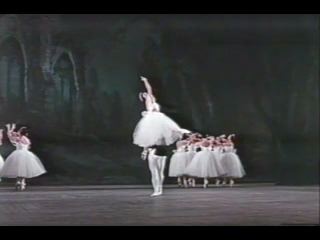
The 2nd lift which, unlike the 1st & 3rd lift, does NOT have a cambre with a horizontal deviation (or does it?); instead it has the leg nearest the parter in back attitude (shifting weight toward partner's center?). N.B. See the 1980 Bolshoi video for variation in which BOTH arms are above head - the female's inside arm passes right OVER her partners head on its way to en haut. Uh huh.
Thinking of Space
What directions in space are singled out in ballet? The Vaganova technique labels the walls & corners of the performance space for easy reference (The Bournonville technique does as well, although with different numbers (see diagrams below). Similarly, one suspects, do the Cecchetti, Royal Acadamy of Dance & the French School). In ballet class we're taught the facings in the room, e.g. en face, croisse devant, &c. And when on stage we are encouraged to project on an upward diagonal to the balcony. Why the numbering system limits itself to a 2 dimensional projection rather than the more familiar 3 dimensions of space that we move in is not clear to me, perhaps it's due to an historically primative pedagogy or a lack of mathematical sophistication, but it is clear that becoming comfortable with facing the ceiling, as if it were just another facing like front or stage right, will permit us a greater range of movement. Laban's "Space Harmony" provides a richer conceptual basis for approaching the description of the dancer's space - it's a shame that more people don't take the time to educate themselves in this regard. (See the diagram below of a 3-part movement "ring" traced within the scaffolding of a tilted icosahedral approximation to the "kinesphere").
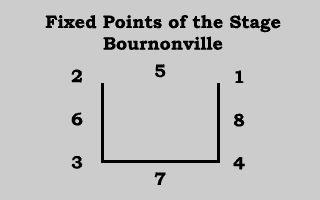
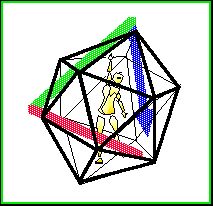
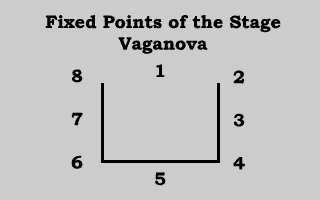
Further Reading ... and writing, and understanding too
Toward greater spatial clarity: analysis, intent & communication via notation
Developing a sensitivity to greater spatial awareness while dancing is made easier by the use of symbols (rather than, say, by reading a long web page devoted to a single lift). When engaged in the process of dance composition or of learning unfamiliar choreography, vectors of motion may be easily, explicitly & quickly referred to using an extension to Motif notation as suggested in the follwing chart. (If only we dancers were all trained in this language of dance, how much more efficient our dance communication would be. Sigh.)
Perhaps (if you dared) you might try composing a couple of measures of lift-movements right now using a few of the following symbols (Hint: You may want to track the lines-of-motions of the arms & gesture leg separately from those of the working leg & those of body's average center of gravity, as they occur at distinct moments in time. Is the list of symbols complete?):
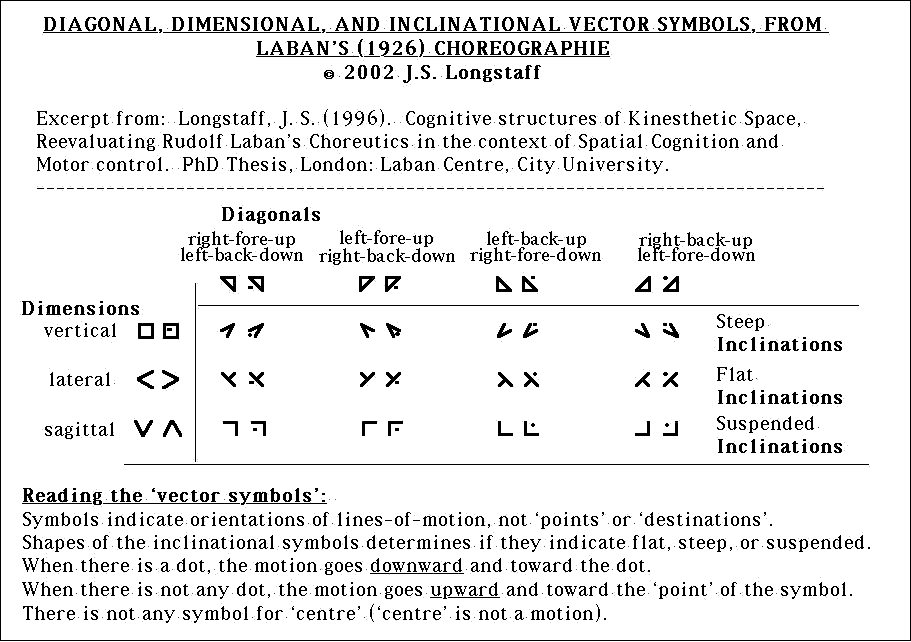
Peace,
Davey
respond to this webpage here























